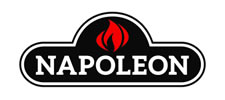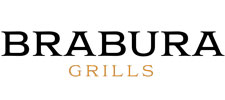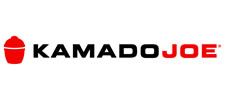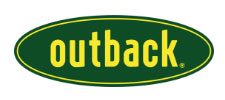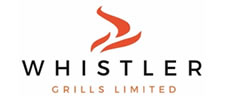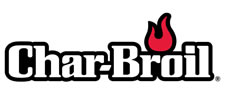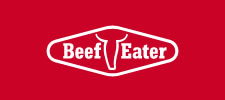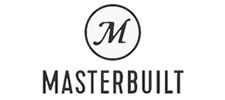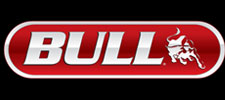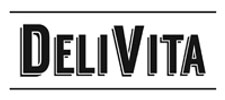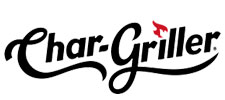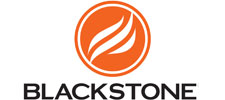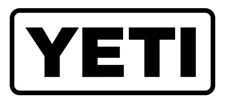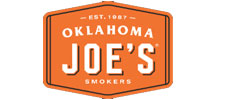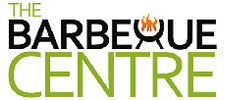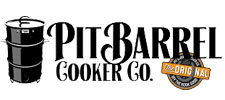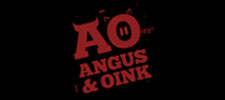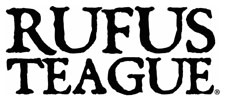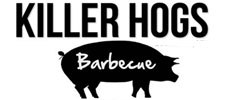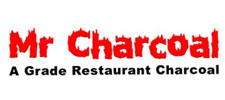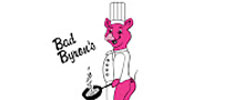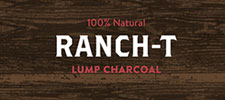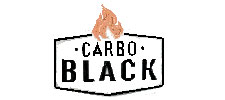The Gas Barbecue - Features & Benefits
We all love a good barbecue, family and friends all gathering for good food, fun and games in the garden, nothing could spoil it more than a bad BBQ, here we give you a little background into the technology used by manufacturers and how to choose the best gas barbecue grill for you.
Over the years the gas barbecue has always tried to replicate the taste of a charcoal grill, using many methods, some good some bad, Lava Rock was one of the biggest players in the cooking system on many BBQ's, however this had its pitfalls so manufacturers came up with a new system, now over 90% of the big brand BBQ's use a system of angled plates that sit over the barbecue's gas burners, this system is referred to by most as a flavour bar, a simple but highly effective form of flavouring food, however you do need to look closely at the design and shape of these bars.
Over the years the gas barbecue has always tried to replicate the taste of a charcoal grill, using many methods, some good some bad, Lava Rock was one of the biggest players in the cooking system on many BBQ's, however this had its pitfalls so manufacturers came up with a new system, now over 90% of the big brand BBQ's use a system of angled plates that sit over the barbecue's gas burners, this system is referred to by most as a flavour bar, a simple but highly effective form of flavouring food, however you do need to look closely at the design and shape of these bars.
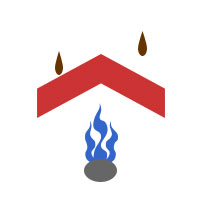
Normal Flavour Bar
This angle and shape is perfect as a flavour bar, the grade is not too steep or shallow, as the fats and juices run off the cooking grills onto the flavour bar, they are instantly turned into smoke by the intense heat of the bar, this full of flavour smoke then passes back up and over your food.
If the flavour bar is too shallow (almost flat) the fats will build up on the top and can result in fire, look at the shape of the bar and make sure is resembles the same sort of grade as the illustration.
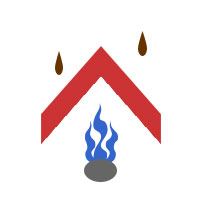
The Taller Flavour Bar
In this example you can see that the flavour bar is very steep, although it serves its purpose, if you're cooking food with a higher fat content such as burgers and sausages, the flavour bar will not be able to cope with the quantity of juices and most will inevitably run off.
When juices and especially fats run off the flavour bar, they will not provide the same level of smoke or vapour and in turn won't flavour the food in the same way.
Why Flavour Bars and not Lava Rock?
Lava Rock is fine to a degree, the idea as with flavour bars is that it is placed directly over the BBQ burners, they reach extremely high temperatures, this then instantly turns fats and juices in to vapour smoke, this smoke carries the flavour back over the food, it is exactly the same as how charcoal works, the coals are hot and fat turns to smoke flavouring the food above, however Lava Rock has its problems:
Lava Rock needs regular replacement, the rock gets covered in so many food variations over time and inevitably ends up carrying all of the flavours over to each meal, so your nice steak can taste a bit fishy if the last meal was a beautiful cut of Salmon, now I like both but Salmon steak is never on my menu.
Lava Rock can't easily be cleaned, so even in the pre cooking warm-up, they don't burn off every bit of the last cook-up.
Flavour bars are made of either porcelain coated steel or Stainless steel, both will eventually need replacing, however they will outlast Lava Rock, they will also burn-off the last cook during the warm-up and can be cleaned with your normal grill brush, or even put in the dishwasher.
Lava Rock needs regular replacement, the rock gets covered in so many food variations over time and inevitably ends up carrying all of the flavours over to each meal, so your nice steak can taste a bit fishy if the last meal was a beautiful cut of Salmon, now I like both but Salmon steak is never on my menu.
Lava Rock can't easily be cleaned, so even in the pre cooking warm-up, they don't burn off every bit of the last cook-up.
Flavour bars are made of either porcelain coated steel or Stainless steel, both will eventually need replacing, however they will outlast Lava Rock, they will also burn-off the last cook during the warm-up and can be cleaned with your normal grill brush, or even put in the dishwasher.
What is a Cook Box?
The cook box, this is the belly of the barbecue where the burners sit, these are constructed from Steel, Stainless Steel or Cast Aluminium.
Steel is the most common, with a porcelain coating, on the lower end BBQ this cook box will rust out over time; unfortunately this is the end of your BBQ. Stainless will over the years slowly with constant heat and cooling revert to its natural form and start to rust, however good 304 grade Stainless will last in excess of 10 years with most seeing 15, bearing in mind that most BBQ's are replaced every 5 years anyway. Cast Aluminium will never rust or rot, this construction is saved for high end BBQ's, the use of cast Aluminium also provides a perfectly solid housing for heavy gauge cooking surfaces and heavy duty roasting hood, if your budget allows, this construction is the perfect option.
Steel is the most common, with a porcelain coating, on the lower end BBQ this cook box will rust out over time; unfortunately this is the end of your BBQ. Stainless will over the years slowly with constant heat and cooling revert to its natural form and start to rust, however good 304 grade Stainless will last in excess of 10 years with most seeing 15, bearing in mind that most BBQ's are replaced every 5 years anyway. Cast Aluminium will never rust or rot, this construction is saved for high end BBQ's, the use of cast Aluminium also provides a perfectly solid housing for heavy gauge cooking surfaces and heavy duty roasting hood, if your budget allows, this construction is the perfect option.
The BBQ Cooking Surfaces
Here is where everything changes depending on the manufacturer, some have porcelain coated steel, others porcelain coated cast-iron and then there's the Stainless steel, any will cook absolutely fine, but some suit different food better than others.
Porcelain coated steel, these grills are often found on entry barbecues, and they work well but over time the porcelain will crack off and the grills then rust.
Porcelain coated cast-iron, perfect for cooking and searing, they are ideal for meats where you want that sear marked steak, the heavier and thicker the cast iron the better heat retention and ultimately will provide a better result. Cast iron is used as a cooking surface on professional barbecues and in kitchens all over the world. Cast-iron does require proper maintenance, before and after use they need to be oiled with high temperature resisting oil, like grape seed, not olive.
Stainless Steel, these come in varying grades and thicknesses, the thicker the better and 304 grade is also the best quality, with good quality you can closely replicate cast iron, the bonus is that they require very little maintenance and are ready to cook on as soon as the BBQ is up to temperature, perfect for most home chefs.
Porcelain coated steel, these grills are often found on entry barbecues, and they work well but over time the porcelain will crack off and the grills then rust.
Porcelain coated cast-iron, perfect for cooking and searing, they are ideal for meats where you want that sear marked steak, the heavier and thicker the cast iron the better heat retention and ultimately will provide a better result. Cast iron is used as a cooking surface on professional barbecues and in kitchens all over the world. Cast-iron does require proper maintenance, before and after use they need to be oiled with high temperature resisting oil, like grape seed, not olive.
Stainless Steel, these come in varying grades and thicknesses, the thicker the better and 304 grade is also the best quality, with good quality you can closely replicate cast iron, the bonus is that they require very little maintenance and are ready to cook on as soon as the BBQ is up to temperature, perfect for most home chefs.
Hooded or Flat-Bed?
Flat-bed BBQ's are more specialist, referred to as a Plancha first flattop barbecues originated in Spain and are known as planchas or la plancha, food that is cooked a la plancha means grilled on a metal plate. Flat bed BBQ's are fine for open cooking of foods that do not take long to cook, fish, burgers and most vegetables are ok and popular in Europe, unfortunately though the flatbed does limit what you can do when compared to a hooded BBQ.
The hooded grill is endless in what it can cook, the BBQ will double as a home oven, where you can cook, bake and grill, and it's also a lot safer. With a hooded BBQ whatever you cook you should always leave the hood down, this promotes even cooking, and a nice hot temperature for baking etc, it also greatly reduces the risk of flare ups when grilling fatty foods.
Hooded BBQ's also allow the use of rotisserie cooking, they can have a warming rack so that cooked food can be taken from the grill but still kept warm, this rack can also be used to cook frozen chips or Yorkshire puddings etc, the opportunities are endless, this is why most manufacturers only offer hooded gas barbecues.
The hooded grill is endless in what it can cook, the BBQ will double as a home oven, where you can cook, bake and grill, and it's also a lot safer. With a hooded BBQ whatever you cook you should always leave the hood down, this promotes even cooking, and a nice hot temperature for baking etc, it also greatly reduces the risk of flare ups when grilling fatty foods.
Hooded BBQ's also allow the use of rotisserie cooking, they can have a warming rack so that cooked food can be taken from the grill but still kept warm, this rack can also be used to cook frozen chips or Yorkshire puddings etc, the opportunities are endless, this is why most manufacturers only offer hooded gas barbecues.
How Many Burners, & What Size Gas BBQ?
This is something that can be tricky, some burners produce a far greater heat output than others, so where you have a 2 burner vs. a 3, depending on the brand of BBQ you may find the 2 burner is a better BBQ, it's always best to look at the BTU output and cooking surface area rather than how many burners a BBQ has, some manufacturers also include side and rear burners in the spec, so a 6 burner BBQ may only have 4 standard under grill burners.
Look at how many people you're going to cook for on a day to day basis, if it's just the family 2, 3 or 4 then most 2 and 3 burner BBQs are all you will need and some like the Weber Q or Broil King Gem have only 1 burner running through the middle, these have the same cooking surface as some 3 burner BBQs and still offer a relative output.
When you look at size, remember that most charcoal BBQs are kettle style and between 47 and 57cm in diameter at best, these still cook a feast for the family with ease. Finally before leaving the house, take a rough measurement of the area where you have set aside for the BBQ, that way when you see what is available you will know what will and won't fit.
Look at how many people you're going to cook for on a day to day basis, if it's just the family 2, 3 or 4 then most 2 and 3 burner BBQs are all you will need and some like the Weber Q or Broil King Gem have only 1 burner running through the middle, these have the same cooking surface as some 3 burner BBQs and still offer a relative output.
When you look at size, remember that most charcoal BBQs are kettle style and between 47 and 57cm in diameter at best, these still cook a feast for the family with ease. Finally before leaving the house, take a rough measurement of the area where you have set aside for the BBQ, that way when you see what is available you will know what will and won't fit.
Do You Need a Side Burner?
Side burners have grown in popularity, most BBQ's now have one, and a lot of people still say they don't need it, however consider the times you have wrapped onions in foil or sweet corn and put it on the grill, what about sauces etc, the side burner is perfect for a pan to sit on gently frying or cooking. Most barbecues also only have grills as the cooking surface, the side burner then lends itself perfectly to a frying pan for the eggs on a sunny Sunday morning, or a wok for perfect stir fry veggies, once you have one, you'll never go back!.
To Rotisserie or Not To Rotisserie..
Depending on the manufacturer and model of BBQ you may get a rear burner and even in some cases a rotisserie supplied with your gas barbecue. If your barbecue does not have a rear burner, don't panic, you can still use the standard lower burners to rotisserie your food, it just depends on your own preference if you use it or not, vegetable baskets are often available for rotisseries so you're not just stuck to cooking meats.
What Does the Manufacturer Also Offer?
It is important to look at what accessories the manufacturer of your preferred BBQ offer, some have a fantastic range of cooking tools and amazing accessories to offer, these are generally tailored and made for their own specific barbecues, it's worth taking a look round these as not only will it provide you with ideas on cooking, but it will also help you make that final choice with your BBQ.
